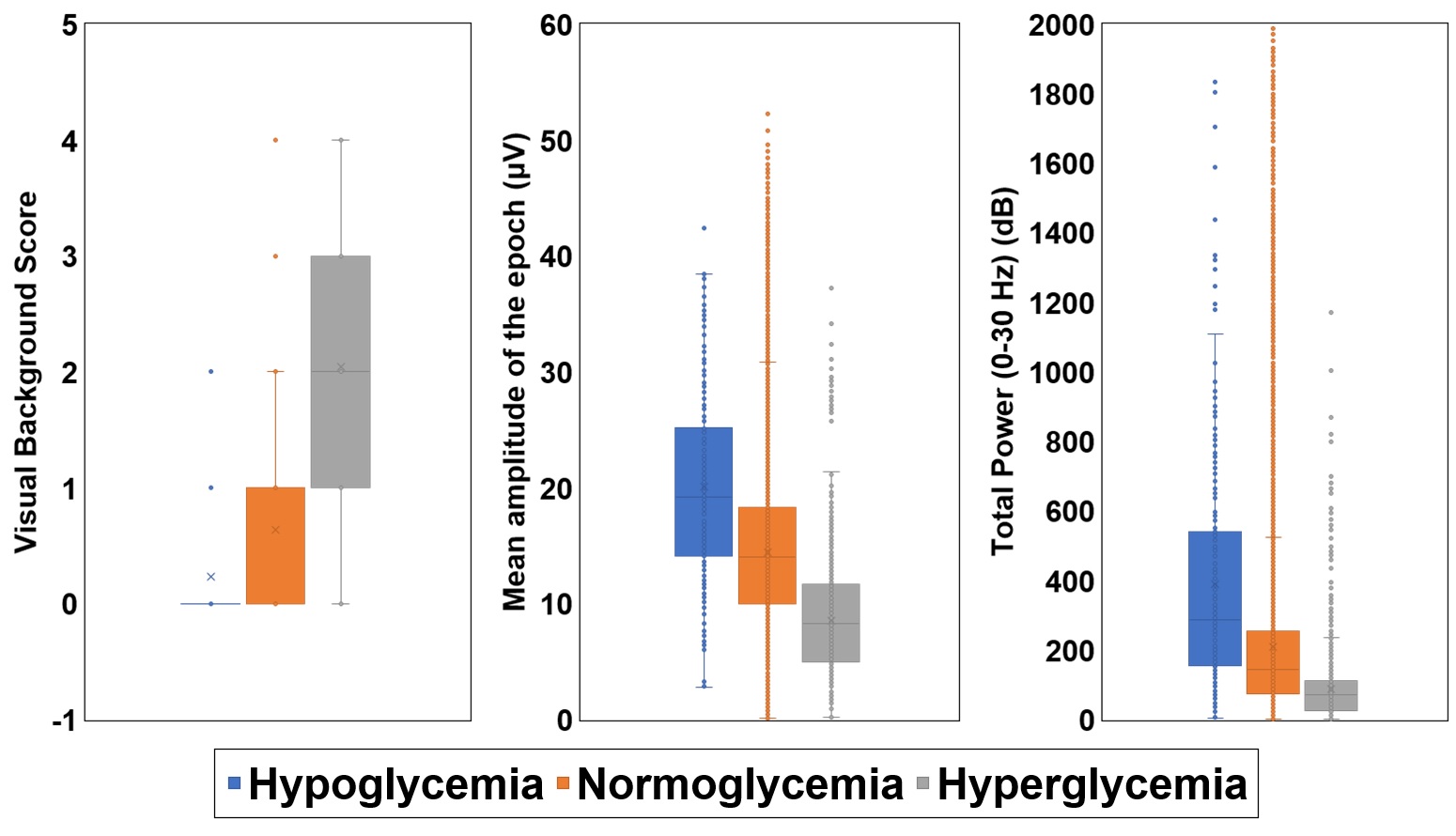Neonatology
Session: Neonatal Neurology 3: Clinical
34 - Assessing the relationship between dysglycemia and brain function in neonatal encephalopathy
Friday, May 3, 2024
5:15 PM - 7:15 PM ET
Poster Number: 34
Publication Number: 34.151
Publication Number: 34.151
- JP
Jessy Parokaran Varghese (she/her/hers)
PhD
The Hospital for Sick Children
Toronto, Ontario, Canada
Presenting Author(s)
Background: Both hypoglycemia and hyperglycemia are common in term neonatal encephalopathy (NE). The impact of these dysglycemic events on brain function is not well defined. Concomitant continuous electroencephalography (cEEG) and continuous glucose monitor (CGM) data enables detailed assessment of the relationship between dysglycemia and concomitant changes in brain function.
Objective: Hypoglycemia and hyperglycemia are common in term neonatal encephalopathy (NE). Our aim was to investigate changes in brain function during dysglycemic events using continuous electroencephalography (cEEG).
Design/Methods: 98 neonates with NE ≥36 weeks gestational age underwent cEEG and continuous glucose monitoring for >48 hours. EEG background activity was visually scored as continuous or tracé alternant, tracé alternant with excessive discontinuity, tracé discontinu, depressed/undifferentiated or burst-suppresion, and low voltage. 19 computational EEG parameters were extracted including amplitude, power, and non-linear measures. Five-minute epochs with hypoglycemia (≤47mg/dL) and hyperglycemia (>182mg/dL) were compared to epochs with normoglycemia. Generalized estimating equations for repeated measures were used to assess these relationships after adjusting for markers of NE severity (5-minute Apgar score, umbilical artery pH, and base deficit).
Results: A total of 19 hypoglycemic events were detected in 13 neonates and 19 hyperglycemic events in 16 neonates. Adjusting for NE severity, epochs of hyperglycemia demonstrated worse cEEG background scores (1.32, 95%CI 1.27-1.37, p< 0.001), while hypoglycemia demonstrated better scores (-0.31, 95%CI -0.44 - -0.17, p< 0.001). Hyperglycemia and hypoglycemia demonstrated opposing associations for the 19 computational EEG parameters: hyperglycemic epochs showed lower mean amplitude (‐5.28mcV, 95%CI -5.60 - -4.96, p< 0.001) and lower total power (‐107.57mcV2/Hz, 95%CI -117.40 - -97.73, p< 0.001), whereas hypoglycemic epochs showed higher mean amplitude (4.43mcV, 95%CI 3.60-5.27, p< 0.001) and higher total power (145.34mcV2/Hz, 95%CI 119.04-171.64, p< 0.001).
Conclusion(s): Hyperglycemia during NE is temporally associated with worse brain function, whereas hypoglycemia is not. While causality cannot be concluded from observational studies, these results provide further support for the potential impacts of hyperglycemia on brain dysfunction and injury.

